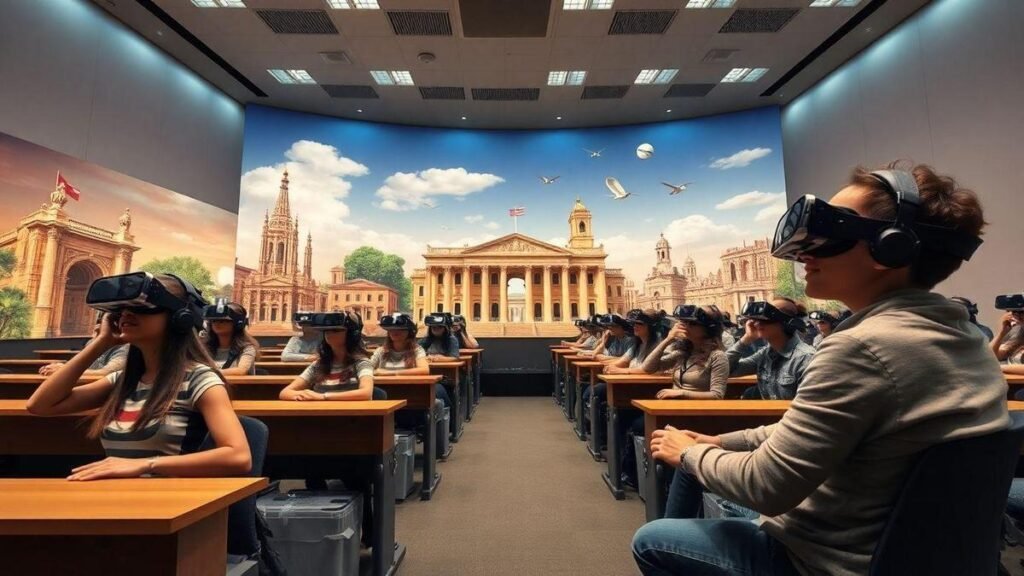
Aplicações educacionais de realidade virtual para aulas de História em sala de aula are transforming the way you learn about the past. Imagine stepping into ancient civilizations or witnessing major historical events firsthand. In this article, you’ll discover how virtual reality (VR) is making history come alive. You’ll see the benefits of immersive learning, engaging experiences, and the innovative ways VR can enhance your history lessons. Get ready to explore how this exciting technology can make history not just fun, but also easier to understand!
Key Insights
- Explore history in a new way with virtual reality.
- VR makes learning fun and more engaging.
- Visit historical places without leaving your home.
- Helps you remember facts better with stunning visuals.
- VR can spark your interest in different cultures and events.
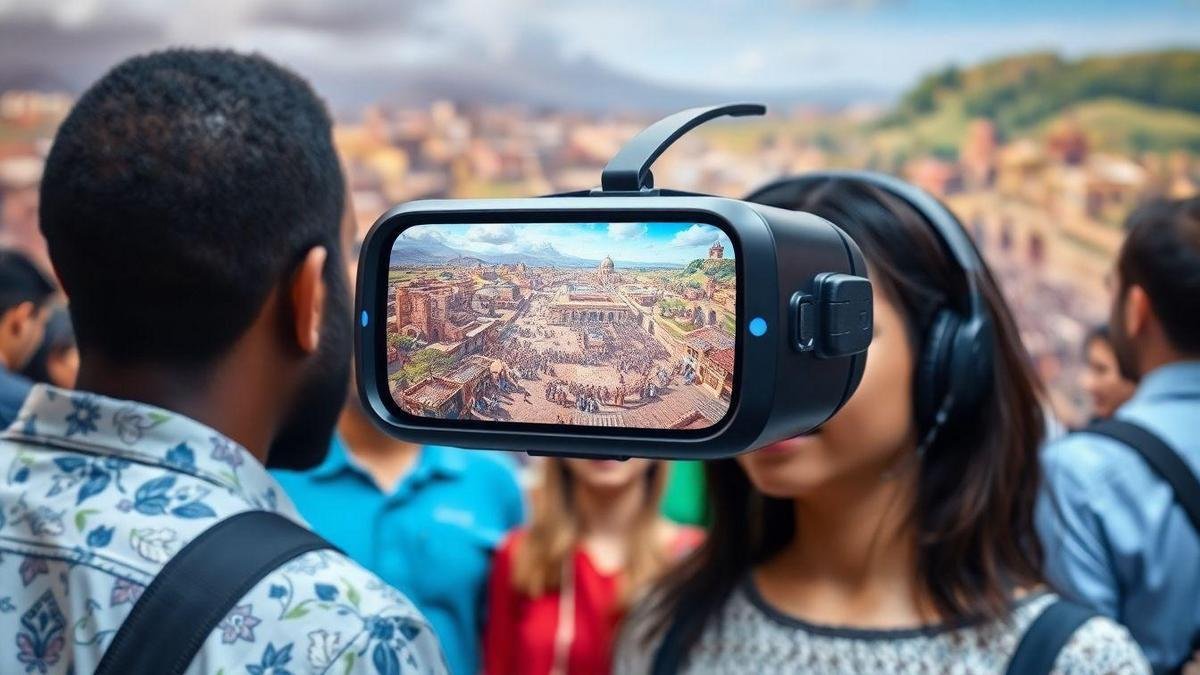
Enhancing Historical Understanding with VR
How VR Brings History to Life
Imagine stepping into a time machine where you can walk through ancient Rome or witness the signing of the Declaration of Independence. Virtual Reality (VR) does just that! It allows you to immerse yourself in historical events. You can see, hear, and even feel what it was like to be there. This technology makes learning about history as exciting as a blockbuster movie.
Benefits of Immersive Learning in History
Diving into history with VR provides a deeper understanding of events and cultures. Here are some key benefits of using VR in history lessons:
- Enhanced Engagement: You’re not just reading from a textbook; you’re living the history.
- Improved Retention: Studies show that experiencing something helps you remember it better.
- Broader Perspectives: VR allows you to see history from different viewpoints, helping you understand diverse cultures and experiences.
| Benefits | Description |
|---|---|
| Enhanced Engagement | Experience history firsthand, making it more exciting. |
| Improved Retention | Remember facts better through immersive experiences. |
| Broader Perspectives | Understand diverse cultures and viewpoints. |
Engaging Students Through Interactive Experiences
Using VR in the classroom can ignite a passion for history. Instead of just hearing about the Civil War, you can stand on the battlefield and witness the strategies unfold. This interactive experience makes history come alive for you and your classmates.
You might find yourself asking questions like, What would I have done in that situation? or How did they manage to survive back then? These questions spark curiosity and lead to deeper discussions.
Incorporating Aplicações educacionais de realidade virtual para aulas de História em sala de aula can transform dull lessons into thrilling adventures. You’ll explore ancient ruins, interact with historical figures, and even participate in reenactments. This is learning that sticks with you long after the class is over!
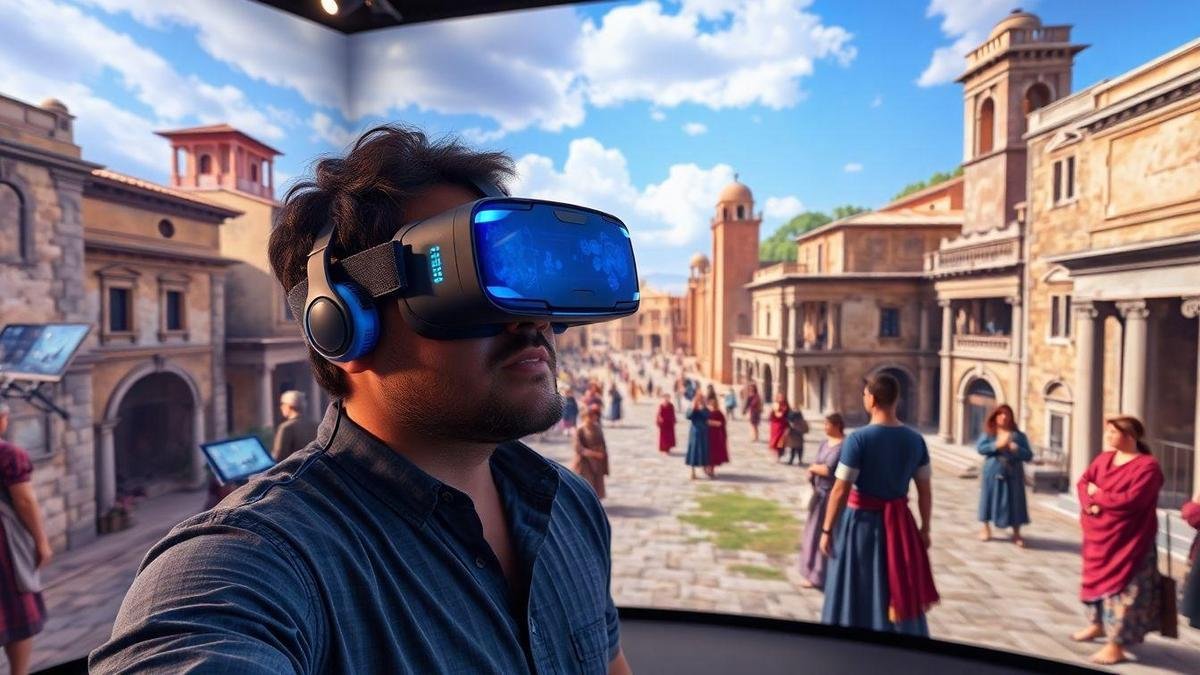
The Role of VR in Historical Simulations
Creating Realistic Historical Scenarios
Imagine stepping into the shoes of a soldier during World War II or walking through ancient Rome. Virtual Reality (VR) makes this possible! With VR, you can experience history like never before. It’s not just about reading a textbook or watching a video; instead, you are immersed in a world that feels real.
VR technology lets you explore historical events and places. You can see how people lived, what they wore, and how they interacted. This hands-on approach helps you connect with history on a deeper level.
Here’s a quick look at how VR creates these scenarios:
| Feature | Description |
|---|---|
| 3D Environments | Realistic settings that make you feel present. |
| Interactive Elements | Engage with objects and people from history. |
| Audio Effects | Sounds that bring the past to life. |
How Simulations Improve Retention of Historical Facts
You might wonder, Do these simulations actually help me remember what I learn? The answer is yes! When you experience history through VR, you’re more likely to remember those moments.
Here’s why:
- Active Learning: You’re not just watching; you’re doing. This keeps your brain engaged.
- Emotional Connection: Feeling the weight of a soldier’s backpack or hearing the sounds of a bustling market creates lasting memories.
- Repetition: You can revisit the same scenario multiple times, reinforcing what you’ve learned.
Studies show that students who use VR in their history lessons often score higher on tests compared to those who rely on traditional methods. This means that VR isn’t just fun; it’s also an effective learning tool.
The Impact of VR on Historical Empathy
Have you ever thought about how it feels to live in someone else’s shoes? VR can help you do just that. By placing you in different historical contexts, you develop empathy for people from the past.
Experiencing events like the Civil Rights Movement or the Holocaust helps you understand the struggles and triumphs of those who lived through them. This emotional connection enhances your appreciation of the complexities of history.
In summary, VR in historical simulations is a game-changer. It allows you to dive deep into the past, making learning not just informative but also transformative.
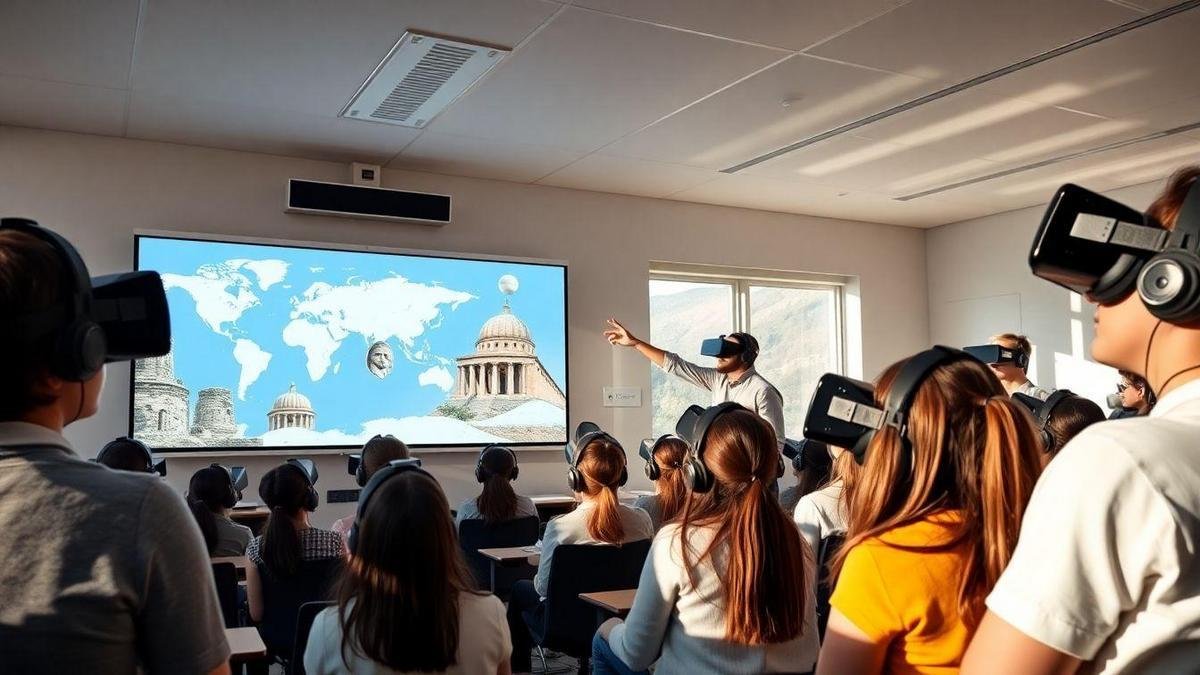
Interactive Learning with VR in History Classes
Encouraging Participation Through VR Activities
Imagine stepping into a virtual time machine! With VR activities, you can travel to ancient Rome or the battlefields of World War II, all from your classroom. This kind of interactive learning gets you excited and involved. Instead of just listening to lectures, you can experience history firsthand.
When you put on a VR headset, you’re not just a student; you become part of the story. You can walk through historical sites, meet famous figures, and even participate in events. This hands-on approach makes learning more engaging and encourages you to ask questions and share your thoughts.
The Power of Gamification in History Education
Have you ever played a video game that made you feel like a hero? That’s the magic of gamification! It turns boring lessons into exciting quests. In history classes, gamification can transform dry facts into thrilling challenges.
Think about playing a game where you have to solve puzzles about historical events to move to the next level. This not only makes learning fun but also helps you remember important details. When you’re having fun, you learn better!
Here’s a quick look at how gamification works in history education:
| Gamification Element | How It Helps |
|---|---|
| Challenges | Keeps you motivated to learn more. |
| Rewards | Makes you feel accomplished. |
| Teamwork | Encourages collaboration with peers. |
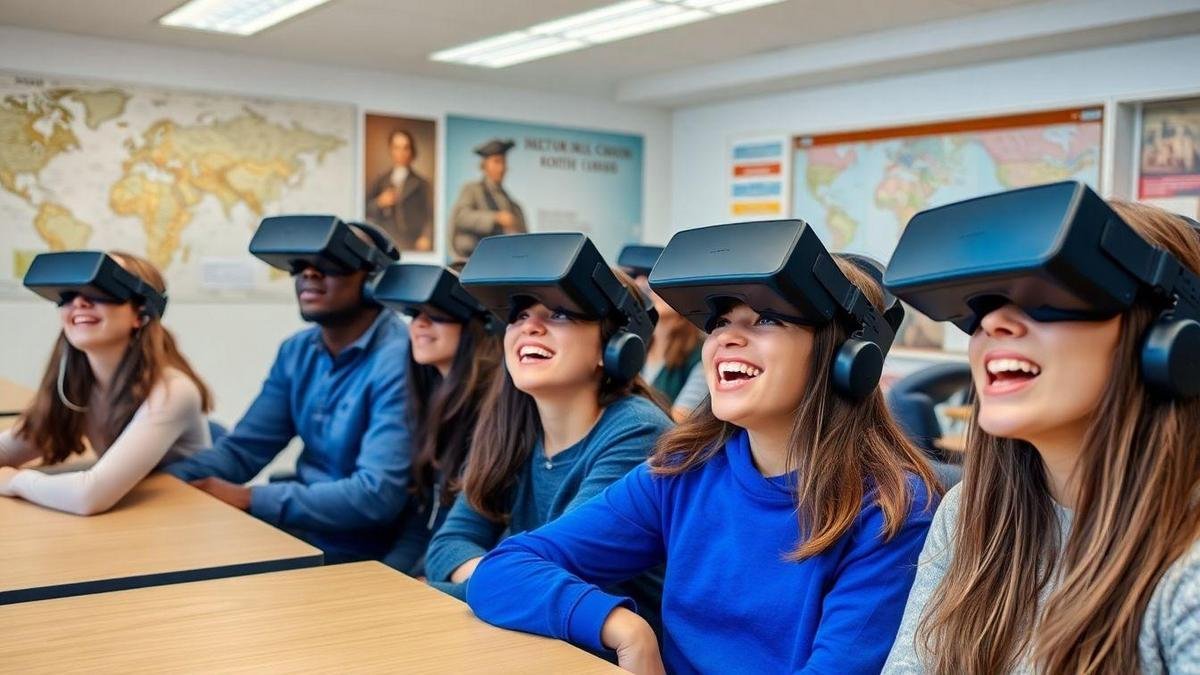
Overcoming Challenges in History Education with VR
Addressing Diverse Learning Styles with VR
When you step into a virtual reality (VR) classroom, it’s like opening a treasure chest filled with different ways to learn. Not everyone learns the same way. Some students grasp concepts better through visuals, while others might need hands-on experiences.
With VR, you can dive into historical events as if you were actually there. Imagine walking through ancient Rome or standing beside the Great Wall of China! This immersive experience caters to various learning styles:
- Visual Learners: They thrive on images and videos. VR brings history to life with stunning visuals.
- Auditory Learners: They benefit from sounds and discussions. VR can include narrations and historical dialogues.
- Kinesthetic Learners: They learn by doing. VR allows them to interact with historical artifacts and environments.
This diverse approach helps you connect with history in a way that makes sense for you.
How VR Can Help Struggling Students
If you’ve ever felt lost in a history lesson, you’re not alone. Many students struggle to keep up with traditional methods. VR can be a game changer!
Here’s how it can help:
- Engaging Content: VR makes history exciting. This keeps you interested and motivated to learn.
- Repetition: You can revisit experiences. If you didn’t grasp it the first time, no problem! You can explore again.
- Safe Environment: You can make mistakes without real-world consequences. This builds confidence and encourages exploration.
Bridging Gaps in Historical Knowledge with Technology
Technology can be a bridge, connecting you to the past. Sometimes, history feels like a puzzle, and VR can help piece it together. Here’s how:
| Benefit | Description |
|---|---|
| Instant Access | You can access historical sites without leaving the classroom. |
| Interactive Learning | You can engage with history through simulations and activities. |
| Personalized Experience | You can learn at your own pace, focusing on what intrigues you. |
With Aplicações educacionais de realidade virtual para aulas de História em sala de aula, you can transform your understanding of history.
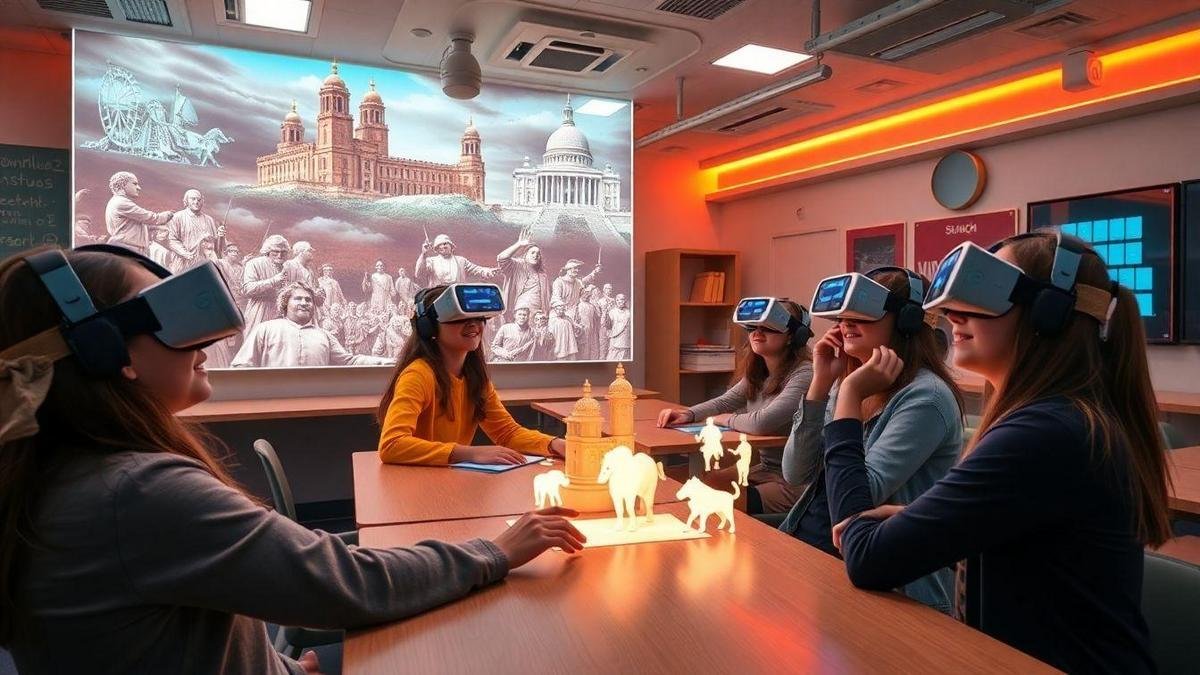
Future Trends in VR for History Education
Innovations in VR Technology for Classrooms
Virtual Reality (VR) is shaking things up in history education! Imagine stepping into a time machine and visiting ancient civilizations right from your classroom. With new VR tools, you can explore places like the Colosseum in Rome or the Great Wall of China without leaving your seat. These innovations are not just cool; they make learning exciting and memorable.
Some of the latest VR technologies include:
| Technology | Description |
|---|---|
| 360-Degree Videos | Experience historical events as if you are there! |
| VR Headsets | Wearable devices that transport you to different times. |
| Interactive Simulations | Engage with history through hands-on activities. |
These tools give you a front-row seat to history, making it easier to understand and connect with what you’re learning.
Predictions for the Use of VR in History Lessons
What does the future hold for VR in history classes? It’s looking bright! Experts believe that more schools will adopt VR to make lessons more engaging. Here are some predictions:
- More Content: Expect to see a wider range of historical events and figures available in VR.
- Increased Accessibility: Schools will find ways to make VR affordable and easy to use for everyone.
- Enhanced Collaboration: Students will work together in virtual spaces, discussing history as if they were in the same room.
Imagine discussing the American Revolution while walking through a virtual Boston! It’s a game-changer for how you learn.
Preparing for Tomorrow’s History Education Today
So, how can you get ready for this exciting future? Here are a few tips:
- Stay Curious: Always ask questions and seek out new VR experiences related to history.
- Get Involved: Join clubs or groups that focus on tech in education.
- Talk to Teachers: Share your thoughts on using VR in lessons. Your voice matters!
By preparing now, you can make the most of the educational applications of virtual reality for history classes in the future.
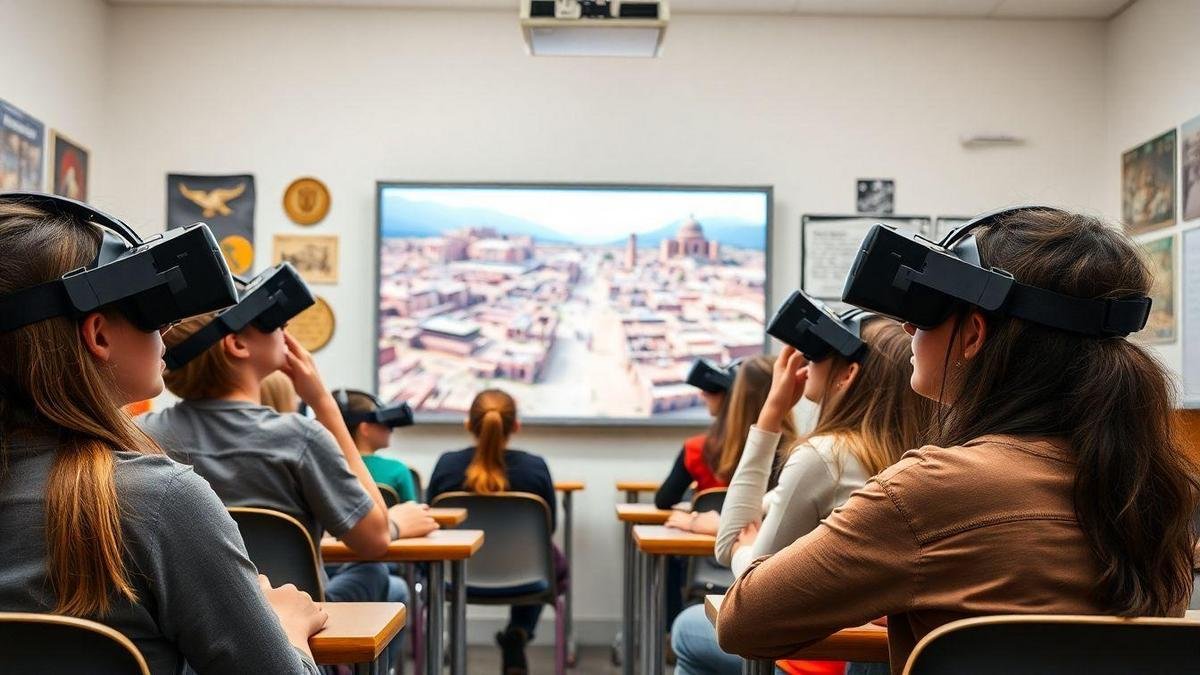
Real-World Applications of VR in Teaching History
Successful Case Studies of VR in History Classes
Imagine stepping into the shoes of a Roman soldier or walking through ancient Egypt. That’s what Virtual Reality (VR) can do for you in a history class. It’s like having a time machine at your fingertips! Schools around the world are using VR to make history come alive.
For instance, a school in California used VR to take students on a virtual tour of the American Revolution. Students could see famous battlefields and interact with historical figures. They reported feeling more engaged and excited about history than ever before.
Another example comes from a school in the UK. They created a VR experience that allowed students to explore World War II. Students could visit the beaches of Normandy and understand the challenges soldiers faced. Feedback showed that students remembered more from these lessons than from traditional teaching methods.
Schools Leading the Way in VR History Education
Some schools are leading the charge in using VR for history education. Here are a few that stand out:
| School Name | Location | VR Program |
|---|---|---|
| Lincoln High School | California | American Revolution VR Tour |
| Oakridge Academy | UK | World War II Interactive Experience |
| Maplewood Middle School | New Jersey | Ancient Civilizations Exploration |
These schools are not just using VR for fun; they are creating lessons that stick. They know that when you can see and feel history, it becomes real.
Lessons Learned from Implementing VR in the Classroom
So, what have these schools learned from using VR? Here are some important takeaways:
- Engagement is Key: VR grabs students’ attention. They are more likely to participate and enjoy learning.
- Accessibility Matters: Not every student can visit historical sites, but VR makes it possible for everyone to experience history.
- Teacher Training is Essential: Teachers need to be trained on how to use VR effectively. Without proper training, the technology can be underused.
These lessons show that while VR is exciting, it also requires careful planning and support to be effective in the classroom.
Conclusion
In a nutshell, virtual reality (VR) is revolutionizing the way you experience history. It’s not just about reading dusty textbooks anymore; it’s about stepping into the shoes of those who lived through monumental events. With immersive learning, you’re not just a spectator; you’re an active participant in a thrilling adventure through time.
From enhanced engagement to improved retention, the benefits of using VR in history classes are clear. You can explore ancient civilizations, witness pivotal moments, and gain a deeper understanding of diverse cultures—all from the comfort of your classroom.
So, why not embrace this exciting technology? The future of learning is here, and it’s vibrant and interactive. If you’re eager to dive deeper into the world of education and technology, be sure to check out more articles at meqviral.com. Your journey into the past is just beginning!
Frequently Asked Questions
What are the benefits of using virtual reality in history lessons?
Using virtual reality makes learning history fun! You can explore ancient places and events. It brings the past to life!
How can I use virtual reality in my history classroom?
You can use VR headsets to let students visit historical sites. You can also use VR apps to watch reenactments. It makes lessons more engaging!
What types of VR apps are good for history classes?
Look for apps that show interactive timelines or 3D models of historical events. Some apps let you speak with historical figures. They help you understand history better!
Are there any challenges with using VR in the classroom?
Sometimes, not all students can use VR headsets at once. Also, the tech can be tricky. But with some planning, it works well!
How does virtual reality improve learning outcomes in history education?
It helps you remember lessons better. You can see, hear, and even feel history. This makes learning strong and exciting for everyone!